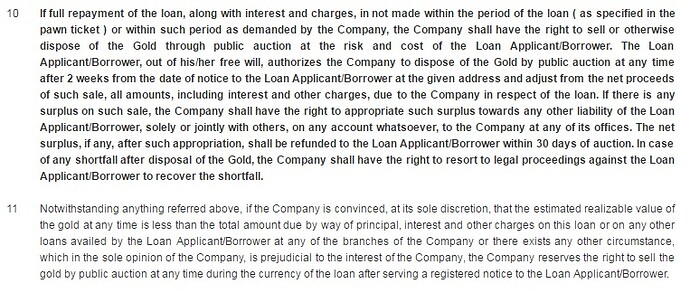It’s not the first time that Manappuram has been discussed here, but very few posts in the recent past and so I am starting a new thread here.
Manappuram has primarily been a Gold loan company and had a great run from 2006 to 2012 during which their sales increased from just 20 cr to 2600 Cr +. The profits also had a similar jump from 4cr to almost 600 cr in the above period - a 150 fold increase.
The steep correction in gold prices starting from 2012 along with the lax lending standards (to the extent of more than 90% of the underlying collateral) that had crept in during the high growth years was a rude shock to them. Since then, manappuram has been working assiduously on tweaking their business model to reduce the impact of fall in gold prices on their P&L. They have now almost entirely transitioned (more than 90% of the loan book) to a 60/90 day loan for 75% of value products and that has largely reduced the npa’s for them.
For the year ending 2015-16, the achieved a sales of 2300 cr with a net profit of 350 cr. One important feature of this business is that there is no major seasonality and so q4*4 can be considered to be the base eps for the next year. With an eps of 1.55 in q4, we will have an eps of 6.2 for 2016-17 even if there is zero growth.
Also since they were having tier I capital in excess of 25%, they got into related fields of microfinance and low income housing finance which has growing exceedingly well, albeit from a decidedly small base.
They should make an eps of 7.5 for 2016-17 and growing at 25% for the next few years and with net NPA’s of almost zero. Over the next 3 years, i.e. FY 2019-20, we can expect the eps to touch atleast 15 on account of significant contributions from their newly created divisions. Their target is to have 25% of the business coming from newly created subsidiaries from the current 10% by FY 2019.
Even a moderate p/e of 15 would put the stock price close to 200 which is almost 5 times the current market price. So indeed a very attractive proposition.
Of course, I am self-confessed goldbug and a gold bull and I expect the price of gold to go up sharply over the next few years with very tumultous economic conditions. Manappuram would be one of the best positioned to gain from such a scenario and I expect the above projections to be the base case without any of the above mentioned factors taken into account.
With a dividend yield of 4.3%, what more can one ask for in a stock. I started purchasing this a few years back at 20+… bought it all the way down till 10 and then all the way up till 35. I hold some decent quantities and intend owning them for the next several years.
The key risk would ofcourse be a sharp correction in gold prices. Any corrections of upto 10% over a few days/weeks wouldn’t affect them too much. A 20% correction would start eating into the interest cover and greater than would risk the principal itself. Otherwise, it’s the normal execution risk involved in their other start-ups of micro, housing, vehicle financing that needs to be monitored.

